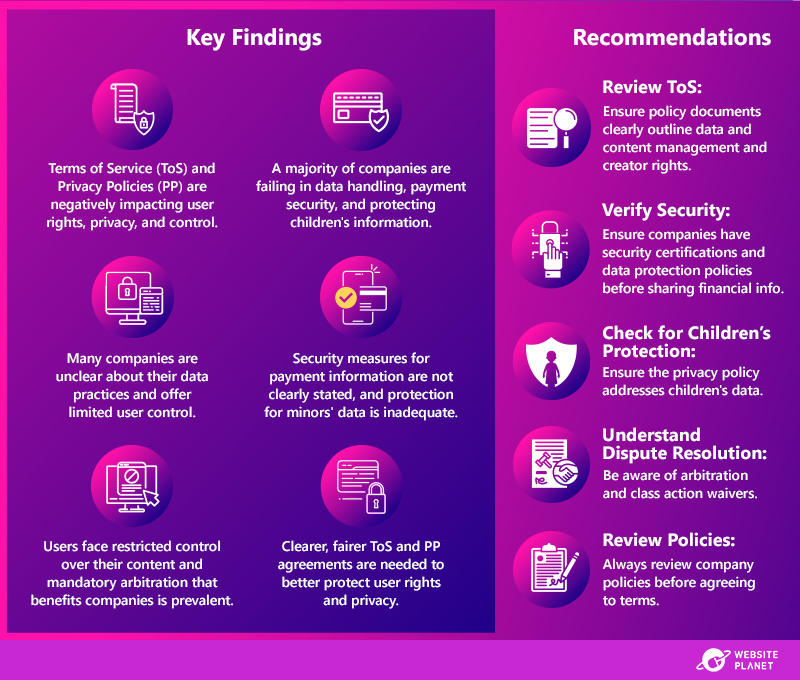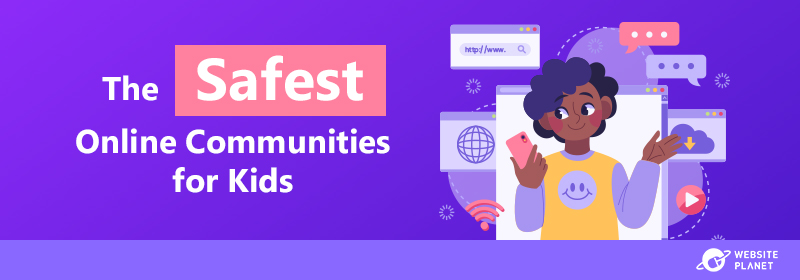Writing with Sensitivity – the Basics
Sensitivity is about recognizing and respecting the experiences and perspectives of our target readers. This involves removing generalizations, stereotypes, and personal biases from our content in order to avoid offending or alienating our audience. An important part of writing in a sensitive way is using inclusive language. It doesn’t just matter how we approach a topic or even what we say – it also matters how we say it. Word choice, grammatical structure, pronouns, and even punctuation affect the meaning of our content and how it’s ultimately interpreted. Each section of this guide has examples of how to write in a sensitive way and avoid problematic linguistic choices. Keep in mind that we’re not claiming to be an authority on inclusive language; there are plenty of other resources that go into greater detail and provide more specific recommendations. We’ve included some useful links at the end of the article.
Categories & Examples of Sensitive Content
Now that we’ve covered the basics, let’s get more specific. There are several different areas where sensitivity is especially important. We’ve divided them into a few broad categories to give an overview of how to approach each one. These aren’t the only areas where sensitivity matters, of course, but they’re the ones that most commonly come up in our content.- Race & Culture
- Sexism
- Gender Identity
- Sexual Orientation
- Disability & Ableism
- Appearance
- Age & Lifestyle
- Politics & Religion
Race & Culture
Both race and culture are social constructs that involve dividing people into different groups based on how they look and/or where they’re from. When discussing race and culture in your writing, it’s important to avoid offensive language – whether explicit or subtle – that might be construed as insensitive toward the members of any given group. We all have our own backgrounds and preconceived notions, and we all live in societies where racism and stereotypes are institutionalized and legitimized in a variety of ways. But when writing directly about these topics, we have to try to put aside our own implicit biases and be as objective as possible.
Examples
Writing about racial and cultural differences in a sensitive way requires some critical thinking. Can you identify what’s wrong with the following sentence?Sexism
When we say “sexism,” we’re talking about discrimination or bias against people who identify as women. This issue intersects with a lot of the other topics covered here and has widespread implications, especially since women make up around 50% of the world population. Sensitive content should reflect a perspective rooted in gender equality and equal opportunity – not in sexist stereotypes, generalizations, or misconceptions. You can use language that supports these values by choosing gender-neutral words, avoiding implicitly sexist terminology, and challenging patriarchal norms through your writing.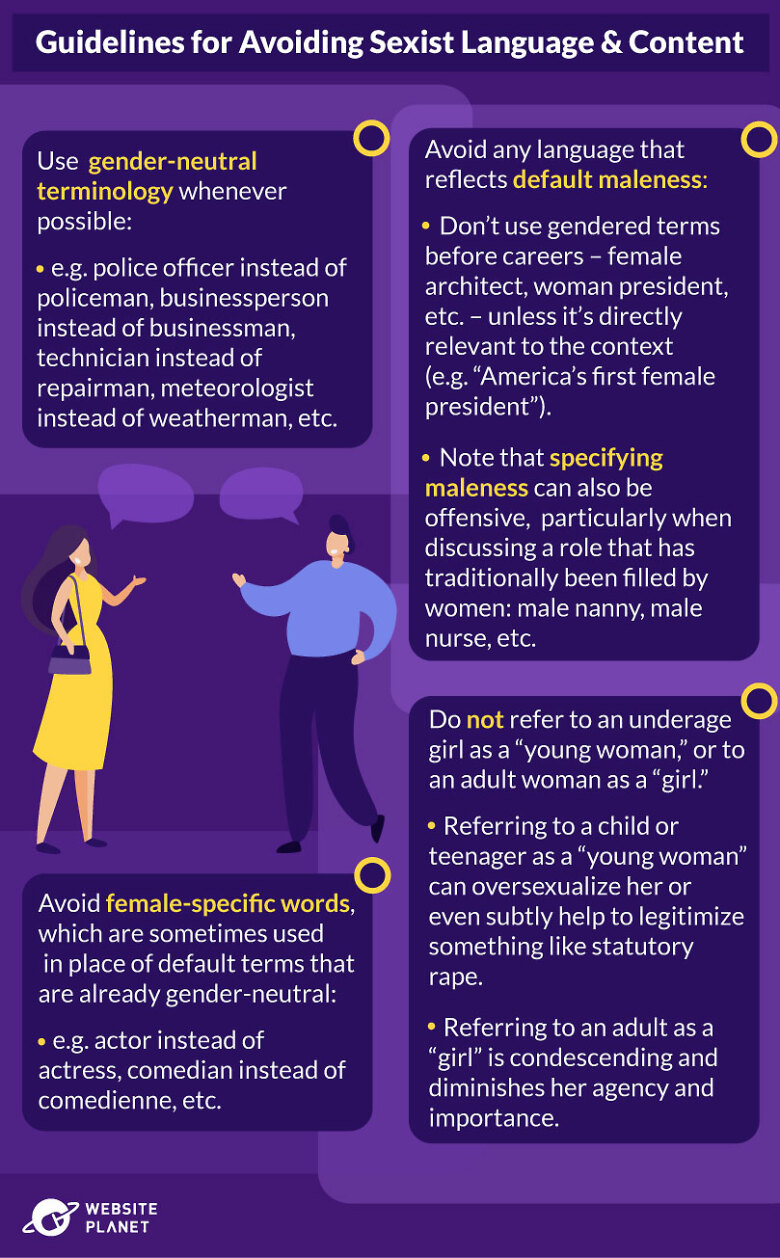
Examples
Let’s say you’re writing an article about the gender wage gap. What’s wrong with the following sentence?- “Young women” and “boys” are not equivalent terms – we’re talking about minors here, so we should use the word “girls.”
- The idea that girls are more “emotionally sensitive” than boys is rooted in patriarchal stereotypes that characterize women as weak and irrational.
Gender Identity
First, it’s important to understand the distinction between gender and sex. Gender is defined as the behavioral, cultural, or psychological traits typically associated with a particular sex. It’s a social construct, not a scientific concept. Sex is a biological distinction based on reproductive organs and structures. Much of the discussion and controversy around these two terms has to do with the concept of gender identity: a person’s internal sense of being a man, a woman, some combination of the two, or neither. Sensitive content should reflect recognition of and respect for all gender identities.
Examples
Let’s take a look at some of the gender-related language we should try to avoid, as well as alternatives for expressing the same concepts in a more inclusive way.Sexual Orientation
Sometimes sexual orientation is confused with gender identity, but these are two distinct concepts. Sexual orientation depends on who you’re attracted to, and is not necessarily linked to gender identity. We should avoid confusing sexual orientation with biological sex or gender identity, using these terms interchangeably, or assuming any links between them. The spectrum of sexual orientation contains a complex variety of identities, all of which are equally valid and deserve the same amount of recognition and respect. Some – but not all – of the labels that can be used to describe sexual orientation are represented by the acronym LGBTQ: Lesbian, Gay, Bisexual, Transgender, and Queer/Questioning.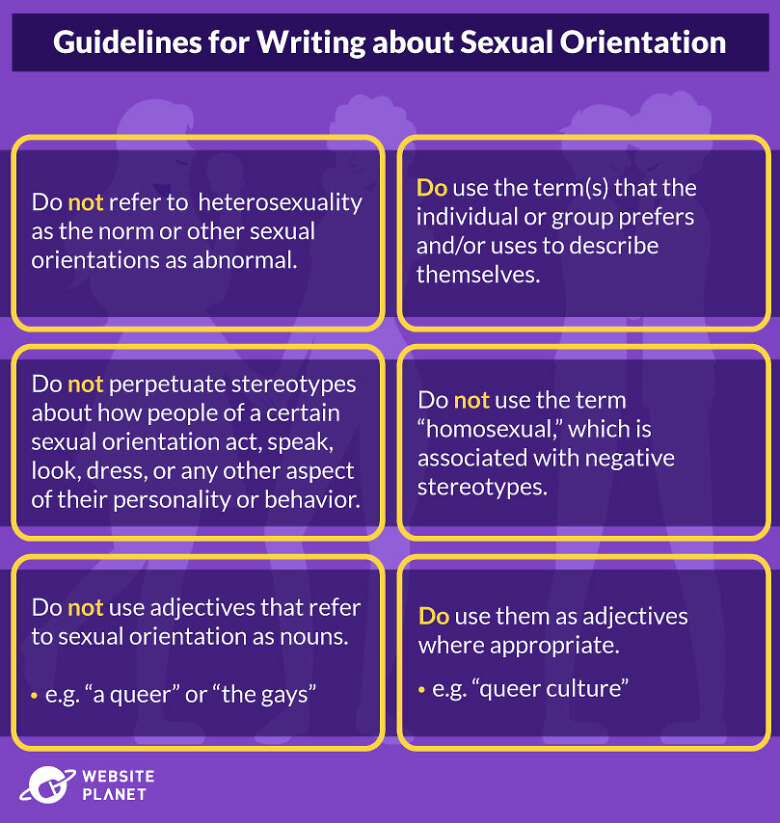
Examples
Try to identify the primary problem with this statement:Disability & Ableism
In this context, the word “ability” refers to people’s physical and mental capacities. A disability is defined by the CDC as “any condition of the body or mind that makes it more difficult for the person with the condition to do certain activities and interact with the world around them.” Around 15% of people in the world live with a disability. All content should reflect respect and consideration for this diverse community and the individuals within it. Ableism is discrimination or prejudice against people with disabilities. It sometimes overlaps with appearance-related discrimination – particularly in the case of visible disabilities – but there are also plenty of invisible disabilities that deserve the same kind of consideration.
Examples
Here are some examples of how the guidelines above might manifest in everyday language. First, let’s see how we can avoid using words that delegitimize mental health conditions.Appearance
Physical appearance is a broad category that overlaps with some of the other areas we’ve discussed. We’ve included it here to highlight how it should also be considered beyond those commonalities. When it comes to appearance, we need to be especially conscious of body image issues and stereotypes that are created and reinforced by various societal norms.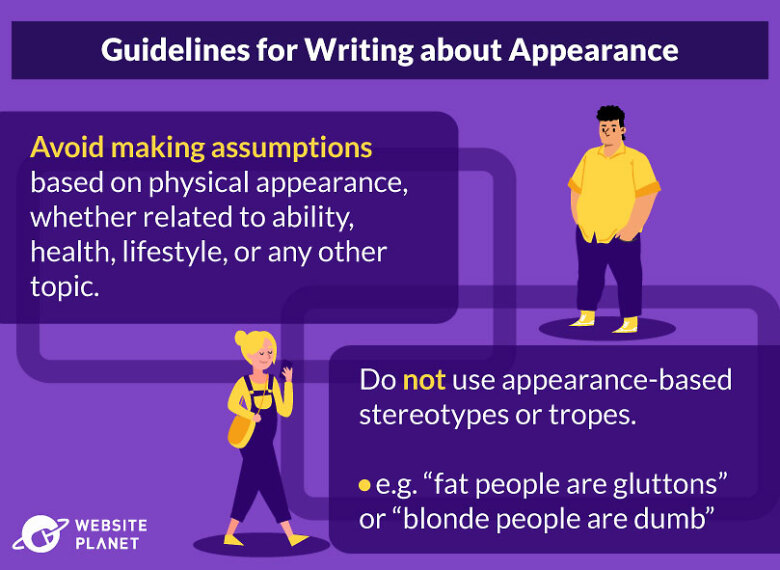
Examples
Aside from being problematic, what do all of the following sentences have in common?“Overweight people are generally unhealthy and don’t get enough physical exercise.”
“Take a walk on any college campus, and you’ll see lots of girls who clearly drink too much and eat too little.”
“If a child can’t look you in the eye and is unusually quiet, they’re probably on the autism spectrum.”
Age & Lifestyle
This is another broad category that can encompass various issues, but one of the most common is ageism. This term refers to stereotypes, prejudice, and discrimination based on age. Many age-related stereotypes are so ingrained in our culture that we don’t even notice them – which makes it even more important to be conscious of them in our content. It’s also important to be careful about how we refer to other people’s lifestyles and life choices in general. For example, things like deciding not to have children, choosing not to get married, or pursuing a non-traditional career path are just as valid as more “mainstream” choices, and deserve the same respect.
Examples
Considering the guidelines above, can you identify what’s wrong with each of these statements?Politics & Religion
Whether or not it’s appropriate to discuss politics or religion entirely depends on the context of what you’re writing. But unless these subjects are directly relevant to the topic at hand, it’s generally best to avoid bringing them up or sharing personal opinions on them. Unless we’re writing an opinion piece, we should try to maintain a balanced perspective without letting our own political or religious beliefs influence our writing. Likewise, we should never assume anything about the political or religious views of our readers – we want to leave room for all belief systems. While some of the points covered in this post may pertain to political or religious ideas, we do not perceive these recommendations as biased. Our primary aim is to demonstrate respect and empathy for our audience members.Examples
Here are a few examples of sentences that are unbalanced toward a particular political or religious perspective. Assuming the texts they’re part of are meant to be objective, let’s take a look at how we could rewrite them to remove this bias.or whatever other religion they follow.*
What about Political Correctness?
If you Google “political correctness,” this is the definition you’ll get: “conformity to prevailing liberal or radical opinion, in particular by carefully avoiding forms of expression or action that are perceived to exclude, marginalize, or insult groups of people who are socially disadvantaged or discriminated against.” But this definition doesn’t cover its negative connotations. Many people interpret political correctness as the idea of having to carefully consider every word they say – or write – for fear of being criticized if they make a mistake. This is a complex discussion that we won’t get into here, but suffice it to say that trying to write in a sensitive way is not quite the same thing as promoting political correctness – at least in the second sense. When we talk about sensitivity, our goal is not to establish strict rules for writers to follow or punish anyone for nonconformity; it’s to help us all think critically about our own writing and its effects on the people who read it. What we’re promoting is respect for our audience, and the recognition that their perspectives may be different from our own.Empathy + Flexibility = Sensitivity
In this article we’ve provided some basic guidelines for how to write about various topics in a sensitive way. But we recognize that they aren’t all hard-and-fast rules, and the “right” way to write something often depends on the context of each situation. This is why it’s so important to evaluate everything on a case-by-case basis. If you’re ever in doubt about how you should represent a certain individual or group, the best thing to do is seek out their perspective. How do they prefer to be portrayed? What words and ideas do they find offensive? Not all members of a given group will agree on these things, but you can always try to find a consensus or a recommendation from a trustworthy source. It’s true that this level of consideration and critical thinking requires extra work, but it’s worth it. And the truth is that there isn’t actually any other option. Every choice we make in our content will reflect a certain position; there’s no such thing as truly neutral language. This is why we have to choose our words carefully, and make sure that we’re communicating positive ideas and values rather than potentially harmful ones. Ultimately, prioritizing sensitivity, respect, and empathy is in everyone’s best interest – no matter the context.Sources & Additional Resources
- The Diversity Style Guide
- NASAA’s Inclusive Language Guide
- The APA’s Inclusive Language Guidelines
- The APA’s guide to writing about sexual orientation
- Council of Europe’s guide to sex and gender
- Stanford’s Disability Language Guide
- Buffer’s guide to inclusive language in tech
- APA Style – Racial and Ethnic Identity
- Debuk – Default: male
- Hamilton College – Writing about Gender and Sexuality






